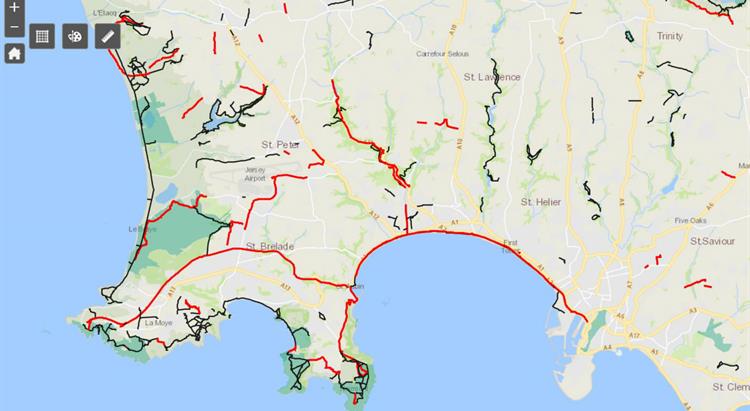03 May 2019

A digital countryside access map which shows where existing coast and countryside paths are and who can use them has been published by Natural Environment officers.
Julia Clively, Natural Environment Officer, hopes the map will become the definitive access guide for the island, showing all known permitted footpaths, bridle paths, cycle tracks and green lanes.
She said: “The map includes not only the 70 kilometres of paths managed by Natural Environment, but also those managed by others including the National Trust for Jersey, Jersey Water and island parishes.
In addition, it clarifies which user groups can use which paths, what their levels of difficulty are and highlights where there may be shared use. Codes of conduct will provide guidance on how different users should share multi use paths.”
The digital, activity-focused map comes as a result of a public consultation in 2014 in which
34% of respondents said they preferred information about countryside routes to be in a digital format via websites and online maps.
In 2016, the government published the countryside access strategy, a co-ordinated plan for future management of the network. It promotes better engagement and co-operative working with the aim of delivering a set of short, medium and long-term actions. As part of this, users and service providers will work together to improve the network, and ensure that it’s suitable for a broader range of users and is safe and resilient into the future.
Assistant Minister for the Environment, Deputy Gregory Guida, said: “Countryside access and recreation can help meet our broader strategic aims for healthy living, improved quality of life and greater enjoyment of the natural environment by all. Access to Jersey’s coast and countryside should be safe, sustainable and cost effective, with minimal impact on biodiversity. This map is an important piece of work to help fulfil our objectives and invest in our network of countryside access for the future.”
Countryside Access Map